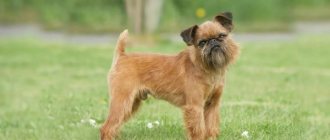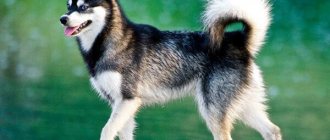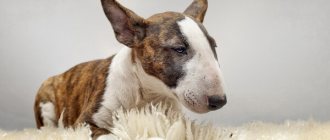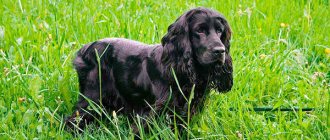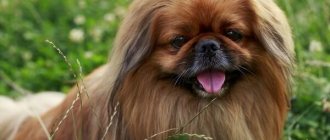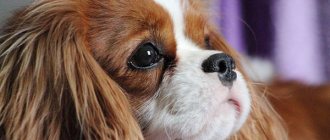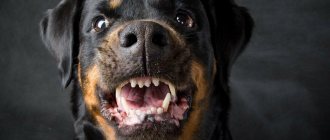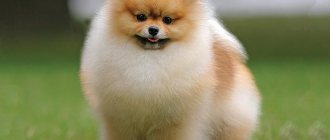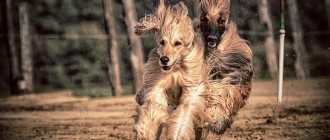Long hair is not only beautiful, but also troublesome. When getting a furry pet, you should prepare for the fact that hairs will be everywhere, including food and bed.
The ubiquitous hairs are especially annoying for allergy sufferers. Therefore, future owners are looking at dogs that do not shed. Such dogs are not only less “hairy” than their shaggy relatives, but also have almost no odor and are hypoallergenic.
You will learn which dogs are non-shedding, which one is better to choose and how to care for them from the rating of the 10 most hassle-free breeds.
Low-shedding and non-shedding dog breeds
They are also conditionally classified as hypoallergenic breeds. Most often, these four-legged pets include the following.
Maltese dogs
These are small domestic dogs with long snow-colored hair that are practically not subject to shedding. The height at the withers reaches a maximum of 25 cm, they weigh no more than 3-4 kg.
These are strong and healthy pets with a friendly disposition and an average level of intelligence. They are able to remember a large number of commands, are easily trained and obedient, and never show aggression.
Despite the fact that the long white coat practically does not fall out, it gets tangled easily and needs frequent combing, washing and treatment with special products.
Maltese (this is another name for the breed) love long daily walks and constant communication with people, only in this case their character remains ideal.
Without the attention of the owner, they become bitter, unsociable, and gloomy. Therefore, these dogs should only be owned by people who are active and not too busy.
Yorkshire Terriers
They are often simply called Yorkies. These are funny little dogs with a perky and friendly character.
Their appearance is characterized by a short muzzle and small erect ears, a tightly built body with a long silky coat.
These pets are very active, love to play with children, and have excellent contact with other pets.
Yorkies are very smart, their level of intelligence can be called high. They not only easily learn a variety of commands, but are also capable of being cunning and bypassing the owner’s prohibitions.
Despite the fact that long hair practically does not fall out, it requires daily care - combing, brushing, and regular haircuts.
If you do not raise Yorkshire puppies in time, they will grow up to be unusually stubborn and capricious, capable of barking loudly and for a long time, disturbing the peace of all household members at any time of the day.
They need an attentive and responsible owner-companion. It is better not to have them if the family has too small children who can injure a miniature pet.
Shih Tzu
Expressive babies are a bit like tiny lions, especially if you create a matching hairstyle from their stuffed wool.
For many years, Shih Tzus (this is a very ancient breed) were only the dogs of the Chinese emperor. Translated, this word means “lion cub.” They appeared at court as a gift from a Tibetan lama in 1653.
Introduced to Europe only at the beginning of the 20th century. Dog experts suggest that the genotype of this small chrysanthemum dog (as they are often called) contains genes from the Pekingese and Lhasa Apso.
The name Chrysanthemum dogs also spontaneously arose at the court of the Chinese emperor, since the long hair on the arrogant, expressive muzzle resembles the flower of the same name.
The color shades of the coat are different, light (white, cream, fawn) and red tones predominate, although completely black individuals are also found. White-red, white-gold, mask, white-blue, brindle and others are common.
Despite its small size, this pet can hardly be called decorative. This is more of a companion who will adore all family members equally and is very attached to people. Therefore, this is a great find for the elderly and singles.
This is a friendly dog with a strong body. Puppies enjoy playing with children, but as they grow up they become more serious.
They are highly trainable and can be litter box trained and not roam at all. This is due to the fact that long, almost non-falling hair, when dirty, requires sufficient care efforts (additional washing, conditioning, combing).
Both the eyes (they are bulging) and the claws, which are strongly curved, need special attention.
Brussels Griffons
These dogs come from Belgium and were originally kept in the royal stables as excellent rat catchers. Over time, their unique character and attractive appearance have made them delightful companion pets.
The size of the animals is small, the hair is short and stiff, the nose has a characteristic shape (like that of monkeys).
It is not difficult to keep such pets, they are easy to train and are strongly attached to people.
You should not keep a Griffin in the house if there is a guard or fighting dog there, there will be a clash of zones of influence. Cats are also unlikely to become his good friends, and any rodents are perceived exclusively as objects of hunting.
These pets do not tolerate loneliness and long absence of their owners very well; they become anxious and are capable of barking and howling.
West Highland White Terriers
This breed was created in Scotland as a hunting dog. The small, dexterous body is capable of crawling even into a narrow crevice while chasing foxes or badgers.
Miniature pets are highly efficient. The breed is the oldest and most likely descended from the Cairn Terrier. The maximum height at the withers is 28 cm, the maximum weight is about 10 kg.
The coat is medium, white. Refers to the wire-haired breed, which sheds little, with hard main hair and a soft undercoat.
The head is quite large, the paws are strong and proportional, the tail is straight, about 15 cm long.
Today it is more of an indoor pet, convenient for keeping in a small apartment, but in need of regular exercise and long walks. Snow fur gets dirty easily and, although it doesn’t shed, needs combing, washing and trimming.
By nature, these pets are cheerful and active, easy to train, even freestyle. They are well trained, capable of loud barking, and require timely training. Suitable for attentive, responsible, active owners.
Miniature Poodles
They are considered one of the most intelligent dogs (included in the TOP 5). Their fur is thick and wavy, their small dark eyes resemble beads; the body, head, paws are proportional to each other.
These are often circus performers, as they are not only easy to train, but also love to be the center of attention.
Poodles have almost no natural shedding, so they will have to be brushed at least once every three days. In addition, hair grows very quickly and haircuts should also be regular.
They love long walks. Not suitable for people who do not want or do not have the opportunity to devote a lot of time to their pets for care and communication.
Bichon Frize
These are small dogs (from 15 to 31 cm in length and height) that came to the world from France.
The coat is curly, long and silky, it can only be snow-white, slight spotting is allowed only in puppies.
The full name of the breed in the original language - Bichon à poil frisé - consists of the words: bichon - lapdog, poil - wool, frisé - curly.
Bichons are often confused with the French lapdog. This pet is valued among dog handlers the more, the smaller the individual.
By its nature, the Bichon Frize resembles a poodle. He is also cheerful, playful and loves attention to his person.
They quickly establish contact with their owners and can be trained. They are wary of strangers. They can easily claim to be a lap dog, as they are litter trained. At the same time, without walking and movement, the pet will mope.
The white curly coat hardly sheds, but requires careful grooming and frequent hygienic trimming.
Chinese Crested Dogs
They belong to exotic breeds. This is a small and graceful pet with a cheerful, cheerful disposition, which is infinitely devoted to its owner and very wary of all other people.
These dogs can be completely hairless or covered with long sparse wavy hair (downy Corydalis). They also differ in structure - they can have small and movable bones (deer) and stronger, more massive ones.
By the middle of the 20th century, the breed was practically lost, but today it has been completely restored and is very popular, mainly due to English dog handlers. The original origin of the breed has not yet been precisely established - Mexico or Africa.
The head is rounded in the skull and elongated in the nose area. The eyes are large, dark, expressive, reminiscent of olives. The erect ears are set low. The head has a peculiar crest, often falling over the eyes and resembling bangs.
Hairless varieties are small (22-29 cm at the withers) and weigh from 2 to 6 kg.
The character is calm and balanced. Long hairs can be on the muzzle and paws, and the tip of the tail.
There is no shedding, but we must take into account that this pet requires special care, as it easily freezes or overheats, and is not able to eat hot and cold food. Needs special clothes, teeth brushing, and detergents.
Giant Schnauzers
They belong to large German breeds with hard hair. The name translates as “giant face”. The dogs are often called giant or bear schnauzers.
Height at withers up to 70 cm, weight up to 50 kg.
These are brave and calm pets, very brave and faithful, hardy and unpretentious, easy to train and adapt to different living conditions.
Risen's fur is so hard that it resembles wire, and is very thick, especially on the body, of medium length. On the muzzle it is longer and softer. There is the same coarse undercoat.
There are two colors - black and salt and pepper.
Initially, this breed was used as a working breed for herding livestock, later in the police and military fields, and in security activities. Rizens are also good as a companion in urban environments.
Dogs of this breed need a lot of physical activity and long walks.
Miniature Schnauzers
They are medium-sized schnauzers, with a maximum height at the withers of up to 50 cm and a weight of up to 20 kg. Otherwise they are no different from Rizen.
These are very kind and active dogs, devoted to all family members.
To care for the coat, which hardly falls out, regular plucking and trimming of facial hair is necessary. In this case, there will be no fluff in the house at all.
Miniature Schnauzers
A variety of schnauzers, distinguished by their dwarf size while maintaining all other characteristics of the breed. At the withers they grow up to 35 cm, weight 4-8 kg. There are four colors of coarse wool - charcoal, pepper and salt, pepper and silver and white. True, the latter is not recognized by all systems.
Zwerg is often called a small dog with a big heart or a pill Risen. He is devoted to his household and has excellent protective qualities.
Basenji
This pet comes from Africa and is distinguished by the fact that it never barks.
It has many other names - Bush Dog, Congo Terrier, Zande, and it is one of the oldest breeds on Earth, more than five thousand years old.
The dog has wrinkles on its forehead and its tail is curled into a spiral.
Basenjis enjoy good health, are confident and fearless, odorless, non-shedding and hypoallergenic. Previously they were only hunting dogs, but are now widely known as family friends and companions.
Maximum height is about 40 cm, weight up to 11 kg. There are four main colors - red and white, tricolor, salt and pepper, brindle.
Xoloitzcuintle
Xolos are very rare pets whose homeland is ancient Mexico.
They are naked and have fur. They also differ in size: regular up to 60 cm at the withers, medium up to 45 cm, miniature up to 35 cm.
This is a beautiful and proportionally built pet that needs special care in order to prevent overheating and frostbite on its unprotected velvet skin.
Does not shed, has no odor, hypoallergenic.
Polish Lowland Sheepdogs
They are muscular, medium-sized dogs with long double coats. The center hair is coarse and can be straight or slightly wavy, but is not curly.
Height at withers up to 50 cm, weight up to 23 kg.
They have excellent memory, are easy to train, and are very popular today as apartment pets.
Hungarian Shepherd Puli
This breed is descended from Tibetan terriers. It was originally used as a herding dog, but today it is popular in apartments.
The dogs are of average height (up to 45 cm at the withers), weight up to 15 kg.
The coat is thick, very long (reaches the ground), and is curled into spiral cords and never falls out. The color comes in charcoal and snow.
It is distinguished by high intelligence and obedience, high activity, good protective qualities, unpretentiousness and endurance, and devotion to people.
Dreadlocks must be combed every day so that they do not get tangled, and the face must be trimmed. Odorless and hypoallergenic.
Bouviers of Flanders
Also originally they were only herding dogs.
Today it is a large and powerful pet (up to 70 cm at the withers), which lives well next to humans in urban environments. An excellent family dog and bodyguard.
Black thick coat of medium length, very thick and dense.
Other breeds
In addition to the named breeds, there are others known that have the ability not to shed, not to emit odor and are conditionally classified as hypoallergenic:
- Irish Water Spaniels;
- Komondors;
- Afenpinschers;
- Various terriers (Australian, Border, Cairn, Silkie, Whippet, Welsh, Airedale, others);
Australian Terrier
- Greyhounds;
- Boxers;
- Italian greyhounds.
This list is far from complete. All these dogs differ in size, temperament, and type of coat, so you can choose a hypoallergenic pet for every taste.
It must be remembered that there are dogs that have no smell at all, but shed a lot, for example, the Dalmatian.
Scottish Terrier
The Scottish Terrier is a hunting breed and can also be a good watchdog. The dog's height is up to 28 cm. The dogs are energetic and stubborn, but nevertheless loyal and amenable to training. Suitable for both villages and cities, but physical activity and long walks are required.
Scottish Terriers are reserved around strangers and do not get along well with small children.
Scotch Terriers have long, shaggy hair. Since the dog sheds little, it needs to be brushed regularly to remove dead hair.
Physiology of molting
Molting is a natural process of changing fur in animals. There are different types of it, but the seasonal one is especially common, when the dog gains additional undercoat before winter or in the spring when it falls out profusely.
Coat renewal also occurs year-round, old hairs die and fall out, and new ones grow to replace them. This process periodically occurs in any four-legged pets, even in hairless breeds, because they even have a small amount of hair on their faces and paws.
Maltese
The breed is classified as decorative. The height of the Maltese does not exceed 25 cm. This dog is a good companion, cheerful, affectionate and energetic. The dog loves his owner very much and, despite his small size, may try to protect him. Loneliness has a bad effect on the lapdog's nervous system.
Maltese dogs are very friendly towards other dogs, cats and small animals.
The breed practically does not shed. The coat requires trimming or regular combing.
Types of dog hair, its properties
In order to understand how shedding actually happens, it is advisable to understand the types of coats in dogs.
Dog handlers say that all dogs can be divided according to this factor into six groups:
- medium-haired (regular);
- long-haired;
- smooth-haired;
- wire-haired;
- curly;
- exotic.
The most common regular coat has hair of medium length and thickness; such dogs need regular combing and washing, especially during seasonal shedding. It is preferable to keep them in outdoor conditions, for example, in enclosures, but nevertheless, shepherd dogs and huskies still live next to humans and in apartments.
In long-haired dogs, the main hair is elongated, and the undercoat is soft and dense. These are, for example, greyhounds or Pekingese. They require careful care, daily washing using special products and combing.
People prone to allergies react most strongly to such pets.
Smooth-haired dogs usually have no undercoat at all, the main hair is quite hard and short (up to a maximum of 2 cm). It is not necessary to wash them often, but they do need regular cleaning. Most often they have a pungent odor, this is the property of subcutaneous fat. The shedding is heavy, short hairs get stuck in the upholstery of upholstered furniture and on clothes.
Wire-haired pets are carriers of soft undercoat fluff and hard outer hair. Shedding is the calmest - the axial coat practically does not fall out, and it is customary to pluck the undercoat.
Not only do curly-haired dogs have an attractive appearance, but they also cause virtually no trouble during shedding and have absolutely no odor. In addition, they have a thin layer of subcutaneous fat (this is what most often gives rise to the dog’s “aroma”). Such pets are most often chosen as companions by people prone to allergies and in old age.
Exotics include dogs with an unusual coat or no coat at all. If you have an allergy to wool, then these pets are ideal. But it should be remembered that irritation is caused not only by fluff, but also by saliva and skin particles.
Nevertheless, in order to have as little hair and dog smell in the house as possible, a pet is most often chosen from the last three categories - dogs with coarse, curly or exotic hair.
Bichon Frize
The Bichon Frize is a small breed, up to 30 cm at the withers. These decorative dogs are sociable, affectionate and energetic, and need attention. Although Bichons are active, they do not need long walks.
The Bichon Frize gets along well with other pets and children.
Dogs of this breed do not shed and rarely cause allergies. They need to be brushed daily and can be trimmed to make grooming easier.
The nature of dog allergies
It should be understood that there are no dogs in nature that do not cause allergies at all. It is customary to call hypoallergenic those pets in which shedding and the release of a special dog odor are less pronounced than in all other breeds. After all, not only wool is an allergen, it is the particles of saliva and skin found on it that are the main irritating factors that cause lacrimation, nasal congestion, sneezing and coughing attacks.
In addition, people's mucous membranes can react to dog dander, dry industrial feeding mixtures, and special pet care products.
A hypoallergenic dog in this case is one that a person does not experience any unpleasant consequences when being near it. But such dogs are nevertheless, to a certain extent, a source of allergens.
Moreover, this is so individual that a patient may have a completely different reaction to two dogs of a similar breed and identically kept. At the same time, two people with allergic reactions can pet the same pet with a completely opposite reaction - one begins to choke, and the other does not feel anything.
This is explained by the fact that each dog has an individual set of allergic markers, and people have different forms of irritation. Today there are clinics that can accurately map an allergy sufferer and indicate all the allergens that are dangerous for a given individual. Then it will be easier to choose your favorite for many years to come.
Nevertheless, there is still a certain logic when choosing in this case dogs of those breeds that do not shed and do not smell. But you should understand that the size of the future pet and the length of its fur do not matter here, but the increased secretion of saliva (salivation) is very important. Dogs belonging to breeds with well-developed jowls (boxers, bulldogs, pugs) should not be chosen by people with allergies.
The situation can be further aggravated by the dog’s bad character and bad manners. After all, the more often a dog barks, the more saliva erupts from its mouth.
The frequency of coat changes and the characteristics of its care are also of paramount importance. After all, the less hair shedding and the easier it is to comb out, the lower the allergenic factor.
Yorkshire Terrier
Yorkies are miniature decorative dogs, whose height is about 20 cm. They are very loyal, playful, and inquisitive. There may be difficulties with training, as the Yorkshire Terrier has an independent character. The dog needs attention and walks.
Yorkshire Terriers get along well with other animals and children
Yorkies have no undercoat and practically do not shed. Wool resembles human hair - it grows continuously and falls out only when damaged. It also rarely causes allergies. However, the dog needs careful care. If you do not cut it, then you need to comb the long hair daily and use additional products when bathing.
The absence of hair from shedding does not guarantee that a dog is hypoallergenic. Individual allergic reactions in people can occur to skin particles, saliva and other animal secretions.
Special care for non-shedding dogs
All dogs, regardless of whether they shed or not, require specific care. In order to completely prevent allergies in your household, you should regularly carry out a whole range of measures, which include:
- Daily wet and dry cleaning in an apartment or house, allowing you to remove microparticles of allergens.
- Accustoming the dog to its place and instilling in it an understanding of a person’s personal space.
- Removal of carpets, rugs, soft coverings, especially if the selected pet has long hair.
- Regular bathing, brushing, combing and cutting the dog at least twice a month.
- Selection of the right dry food and hair care products.
- Installing an air purification filter in the room.
- Minimizing your pet's contact with other dogs, especially street dogs.
If a new pet is planned in a house where there is an allergy sufferer, then the patient first needs to communicate with the puppy on neutral territory to identify individual reactions to the dog.
Italian Greyhound
The Small Italian Greyhound is a small dog, up to 38 cm at the withers. Other names: Italian Greyhound, Italian Greyhound. This is a wonderful companion, attached to the owner. Dogs love to run, chase things, and play outdoor games. However, they are prone to injury and agitation, so you need to take care of Italian Greyhounds.
Italian Greyhounds are not well suited to living with cats or other small dogs.
The Italian Greyhound has a short, silky coat with almost no undercoat. The dog sheds little and does not require special care.
Basenji
The dogs are medium-sized, up to 43 cm tall. They are unique in that they do not bark. In addition, Basenjis do not smell and practically do not shed. The dog's fur is short and does not need to be brushed very often. The breed is considered hypoallergenic. All this makes the pet especially suitable for a city apartment. Nevertheless, the dog is very energetic and active, with developed hunting instincts, so it needs constant physical activity and long walks.
Basenjis are not known for their patience with children, but can get along well with them if raised together.
Basenjis are independent, inquisitive and mischievous. They are attached to the owner, but are often indifferent to other people.
Giant Schnauzer
A breed of large dogs, up to 70 cm at the withers. Because of their size, they are also called giant schnauzers. Giant Schnauzers are balanced, brave and loyal, and are easy to train. They can be service dogs and guard dogs. Adult dogs need long walks and intense physical activity to stay in shape.
In order for the Giant Schnazer to get along with other animals and children, he needs early socialization
Dogs practically do not smell and do not shed. A distinctive feature of Giant Schnauzers is their hard, wire-like coat. It requires regular brushing.
Labradoodle
The Labradoodle is the result of a successful cross between a Labrador Retriever and a Large Poodle. As a result of thoughtful actions of breeders, the resulting individual not only has an attractive appearance, but is also considered a hypoallergenic animal. Labradoodles are classic pets for the whole family due to their gentle nature and gentle disposition.
Unfortunately, these dogs are not at all common in Russia; they are almost impossible to purchase from an official breeder. Therefore, dog breeders advise going to Poland or Finland in order to purchase a purebred representative of the breed, without fear of encountering a fake.
Labradoodle
Irish Water Spaniel
The Irish Water Spaniel has a long history. A hunting dog and companion, the Irish Water Spaniel is a friendly, active and loyal breed.
Interesting Irish Water Spaniel fact: Their coat requires regular grooming, but the breed is considered non-shedding and hypoallergenic as it has less dander than many other dogs.
Shih Tzu
The almighty “lion dogs,” known as Shih Tzu dogs, date back to the Tang Dynasty. One look and you'll understand why the breed once captivated royalty with its regal (but unassuming!) appearance and charming, friendly personalities. Since their hair grows naturally, it requires a fair amount of maintenance. Meet with a good groomer and get your puppy into the habit of brushing his teeth regularly.
Fox Terrier Wirehair
The breed is a small terrier, about 39 cm at the withers. It should not be confused with the Smooth Fox Terrier, which is a completely different breed.
Wire Fox Terriers have a very developed defensive reaction, which is why they can bite; this must be taken into account if there are small children in the family
The dogs are quite strong, with an athletic build. Very active, sometimes naughty, do not like loneliness. Hunting instincts are highly developed, so the pet can chase cats and other small animals. Wire Fox Terriers shed little and require regular brushing.
Poodle
Unlike the more versatile schnauzers, all poodles belong to the same hypoallergenic breed. This includes large standard, toy and miniature versions, so you can choose any size doggie. Super smart poodles are very easy to train, making them one of the most popular dogs in the United States. As for this fancy "poodle clip," the traditional cut protects the water-loving dog's joints and vital organs while swimming, and also looks damn adorable.
